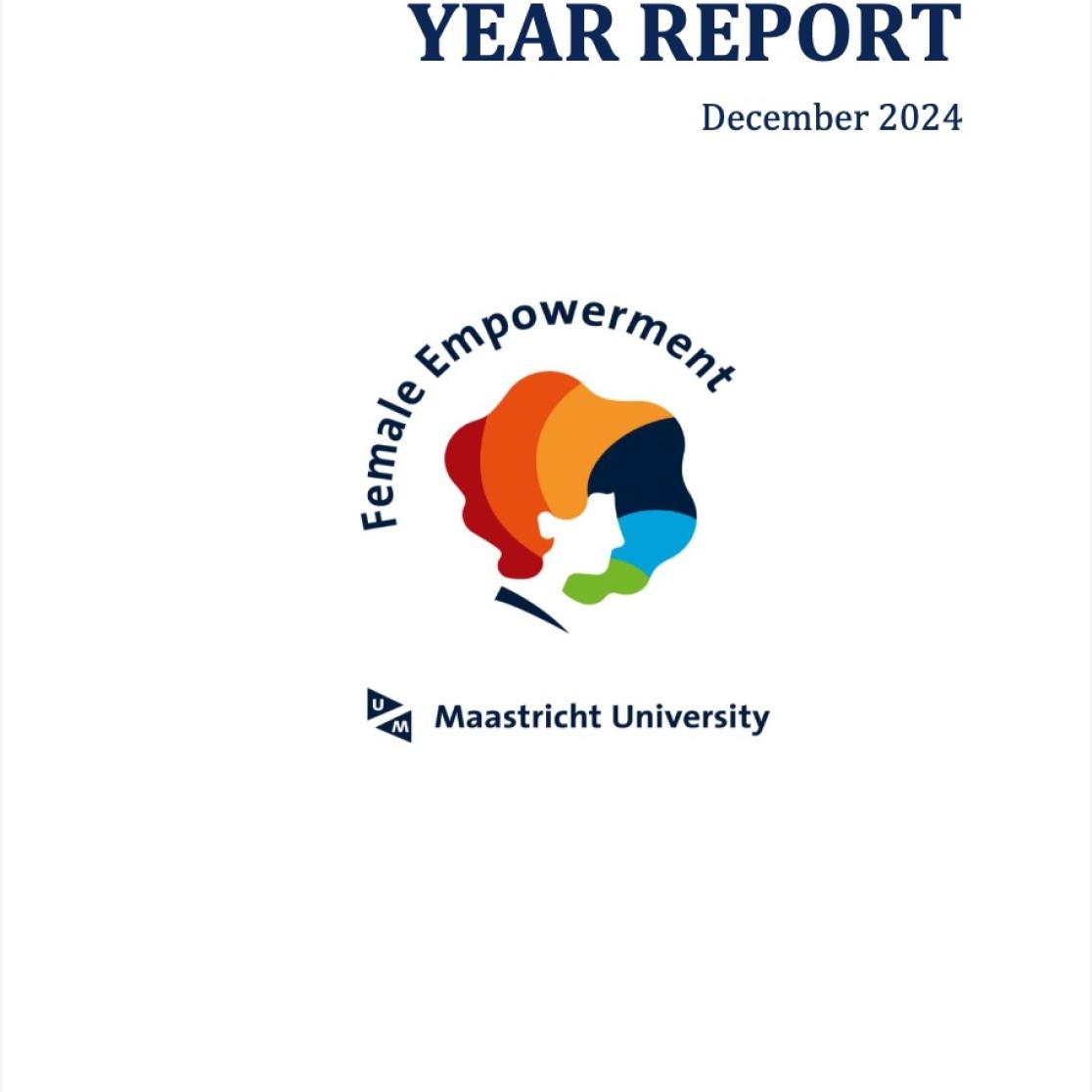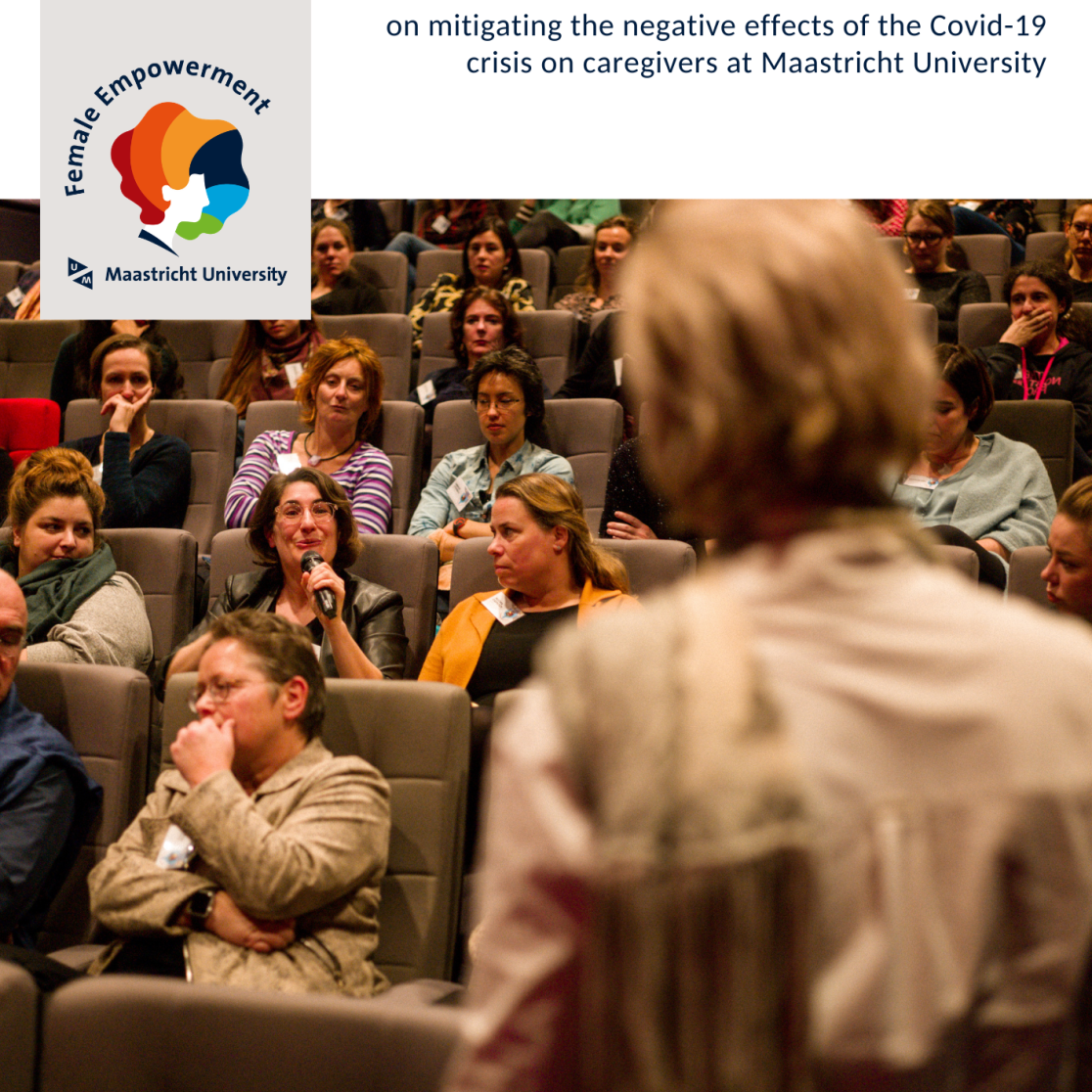MaCSBio Science Days 2021 - Registration
Why did UM create New-B?
How long is the course?
What does New-B cost?
Is New-B graded?
Is New-B mandatory?
How long do you have access to the course?
Can you share this course?
How do I access New-B?
Why did UM create New-B?
New-B was developed to offer new bachelor students in the European Law School, regardless of their backgrounds or past fields of study, an excellent start to their legal studies and with the core knowledge they need to succeed.
How long is the course?
The course is self-paced, and each student will spend a different amount of time on it, depending on their background and preferences. Completing the course should on average take between 10 and 12 hours.
What does New-B cost?
New-B is free for all registered European Law School bachelor students.
Is New-B graded?
New-B provides you with numerous occasions to check your legal knowledge and comprehension. However, it is not graded.
Is New-B mandatory?
Completing New-B is not mandatory for your admission to the European Law School bachelor programme. However, it is recommended that you take the online course to familiarize yourself with basic legal concepts and skills that will help you throughout your studies. You should also bear in mind that your tutors may assume that you are already familiar with concepts covered in New-B when classes start.
How long do you have access to the course?
You will be able to access the course in July and will have unlimited access throughout your entire first year of the bachelor programme. No application to New-B is required, as the programme will be made automatically available on your canvas environment.
Can you share this course?
New-B is intended for personal use only and may not be shared or redistributed in any form without express written permission from Maastricht University.
How do I access New-B?
You can access New-B via the canvas learning environment (hyperlink) using your UM credentials: your um student id number and password.
*** CONTACT: bachelors-law@maastrichtuniversity.nl ***
Dinner - Opening Academic Year 2021/2022
'Greening of IT' involves reducing the negative sustainability impact of ICT hardware throughout the chain, from production and use to waste disposal. Through UM's procurement policy, suppliers are expected to meet the minimum requirements for sustainable procurement (PIANOo). By defining and applying award criteria in the area of corporate social responsibility, we select suppliers who make additional efforts in sustainability in terms of CO2 emissions, environment, circularity and well-being & health.
Below you’ll find some examples of developments of our sustainable ICT related services:
Energy Crisis
In the context of the energy crisis, our service center ICTS has taken additional measures to save energy. To this end, the equipment present in the server rooms at UM locations has been critically examined. Equipment that is not in use has been switched off and immediately disconnected from the power supply to prevent standby power consumption. We are also rearranging our server environments so that systems are switched on and off when necessary. As a standard, equipment is now on standby and is automatically started up when demand increases. Furthermore, network components are connected more efficiently with a view to saving costs. Consider, for example, combining more connections per network component so that another component can be switched off. Furthermore, the cooling temperature in the server rooms is increased so that less cooling is needed.
Surf the internet with Ecosia
From 2021 the sustainable search engine Ecosia has been set as a standard on all Student Desktops (SDT) in all library locations. Ecosia is also available for students who use Student Desktop Anywhere for external access to the SDT-facilities on and off campus. Ecosia is the search engine that plants trees to help fight climate change. For an elaborate explanation on this initiative, read the complete article on the Library Wall. Below you'll find the two monthly Ecosia report for UM.

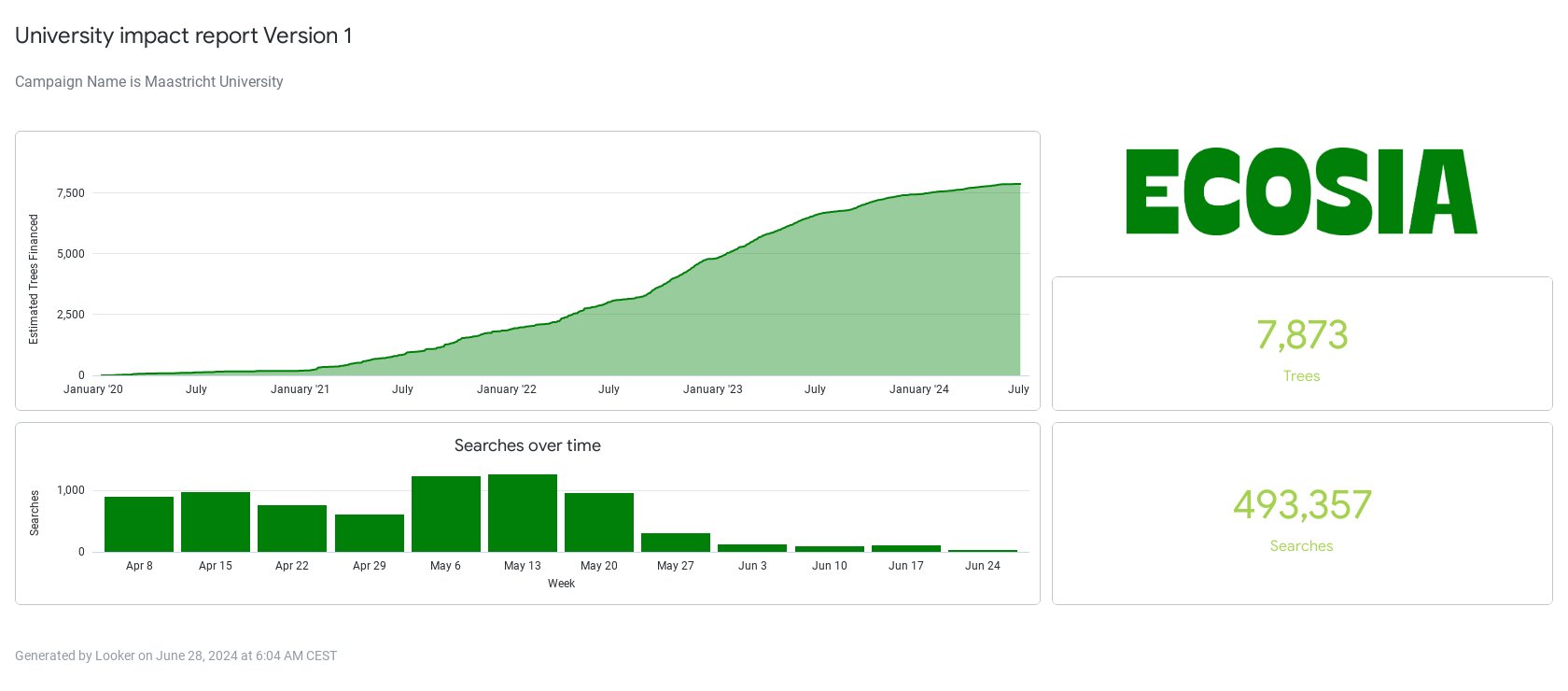
Printing and paper
In 2020 a new tender contract was set up for the printing services. The new supplier offered complete climate neutral printing services. The equipment has a minimal energy use; the standard multifunctionals have a TEC-value (conform Energy Star 3.0) of 1.8 kWh. This led to an energy reduction of 30% in relation to the previous printing equipment.
The copy and printing paper at UM is labeled conform FSC and EU Ecolabel. All paper is ECF (Elemental Chlorine Free), that means bleached without chlorine gas. It’s been CO₂ neutral manufactured, the energy needed for manufacturing comes from recovered energy from pulp production. The inevitable emissions from transport are compensated by the supplier by certified CO₂ certificates.
To be able to print completely climate neutral, not only the paper, but also the transport of the paper has to be climate neutral. For this reason, our service provider has bought an electric car in 2021, which is used for its services for UM. This car is used to bring paper and toner to UM locations. Moreover, this car is also used when small malfunctions of printers need to be fixed, like jammed paper. The car is charged at UM with 100% green electricity. This way, UM is one step closer to climate neutral business operations.
Paperless working
Within UM there are several initiatives to facilitate and implement paperless working. Since 2018 invoices can only be submitted digitally via the UM portal. For paperless meetings staff can use iBabs.
Data center
UM has moved a part of its server capacity to the former TV tower Daalhof, a concrete transmission tower from 1967. The data center is equipped with an ultra-efficient cooling system that is energized by 100% Dutch wind energy. Currently we are investigating whether even more of the internal server capacity can be moved to more efficient external data centers.
Virtualisation
Since 2010, UM has taken important steps to reduce the explosive demand for server platforms and subsequent energy use by using virtualisation. All primary organization processes work on virtualised server and storage platforms, by which the environmental footprint is limited as much as possible.
Smart Building
Almost all of UM’s buildings are connected to the building management system, so installations can be monitored and managed remotely. Developments in internet and sensor technology make new kind of applications possible. Since 2020, weather predictions are taken into account in controlling the indoor climate. Early anticipation of weather changes benefits the comfort and energy efficiency of the building.
In the renovation and new development project Tapijn, smart technology has been used conform the sustainability guidelines BREEAM and WELL Building. In the forthcoming years, UM’s scientists will research the effects on wellbeing of the building’s users. The research results and experiences are used as input for the future vision of UM’s realty.
In the latest tender for LED lighting we selected a system that has additional capabilities to further implement Smart Building Technology, such as controlling heating, cooling and ventilation systems based on presence.
E-waste
Electronic waste is collected separately and processed by a company that is certified by WEEELABEX. For returning old equipment, employees can submit an online request via Facility Self Service. AthenaDesktop computer equipment can be returned through the ICTS Self-Service Portal. If you want to dispose of used batteries, there are blue boxes available near the reception desks or entrances of UM buildings.
Below you will find the most frequently asked questions and their answers regarding the migration to the new SAP Ariba Network. This list will be continuously updated. Find your question below or go directly to:
Joining the Ariba Netwerk
Project scope
Go-live Ariba Netwerk
Getting started with catalogues onto the Ariba Network
Other
Is your question not here?
UM Supplier Onboarding Team
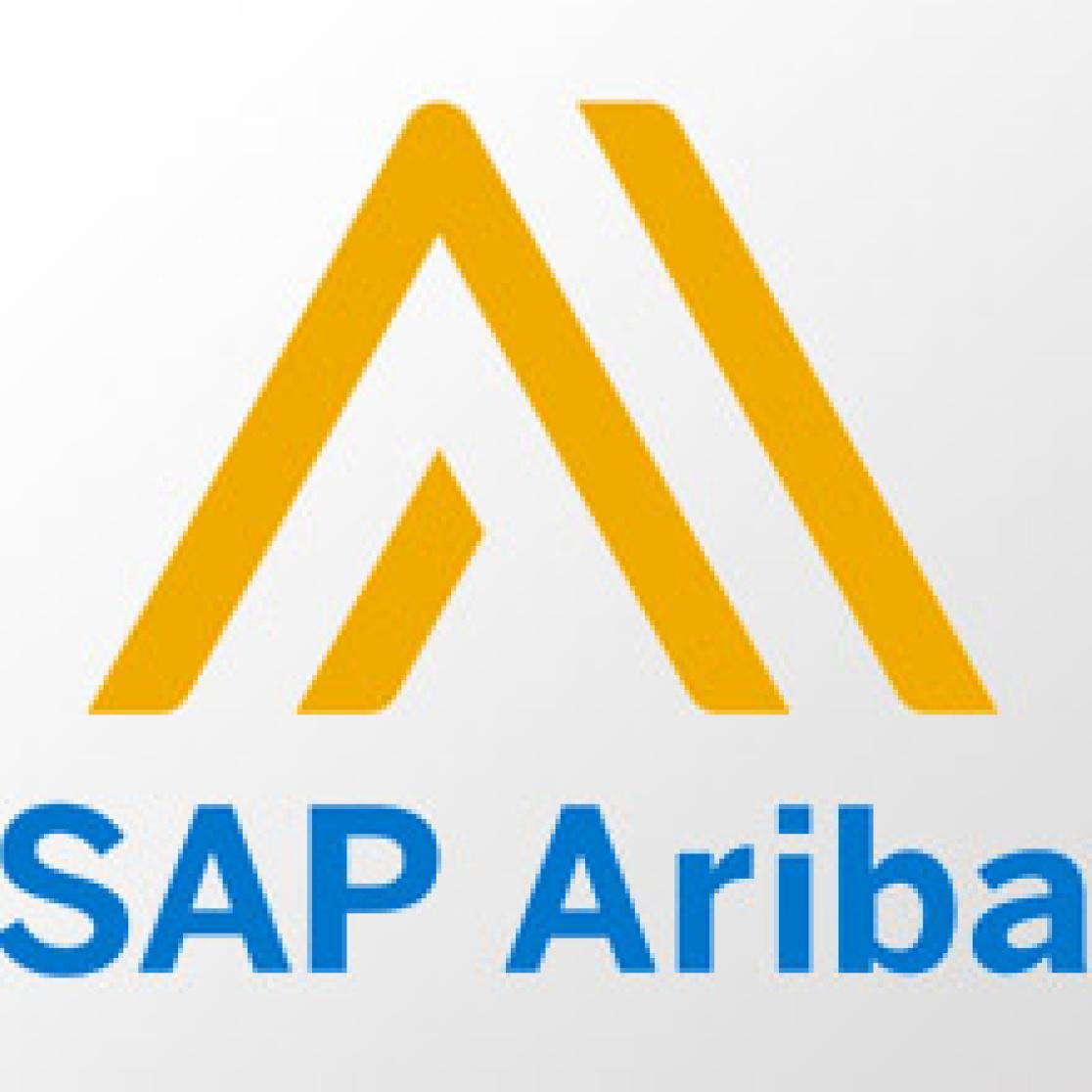
Joining the Ariba Network
What is the SAP Ariba Network (AN)?
Ariba Network is an online platform for business transactions such as purchase orders, order confirmations, catalogs and invoices. Using the AN minimizes discrepancies by confirming invoice data upfront. The AN is used by many other (international) organizations, so it is not a specific platform of Maastricht University. More information can be found here. To access your AN-account and other information about the AN click here.
Why did Maastricht University choose for the Ariba Network?
Maastricht University has chosen the Ariba Network because this system offers the functionalities that UM needs to purchase in a professional manner now and in the future. SAP Ariba supports the work from quotation to payment of the invoice.
Is joining Ariba Network required to transact with Maastricht University?
From June 8 2022, all purchase orders will be sent via the Ariba Network.
How does the Ariba Network work?
Once you have registered on the Ariba Network and the Trading Relationship Request is signed, all new POs issued by Maastricht University will be send to your Ariba account. Once you receive the PO in your inbox (AN Inbox) you can flip the PO into invoice and update the invoice number and date and submit through Ariba Network.
How can I register on the Ariba Supplier Network?
You will receive a request from Maastricht University to create an account on the Ariba Network and to establish the trading relationship. If you don't have an Ariba Network account yet, you can create one by registering via http://supplier.ariba.com
When will Maastricht University start using the Ariba Network?
From June 8 2022, all purchase orders will be sent via the AN.
What types of accounts are available within the Ariba Network?
The AN provides an Enterprise Account and a Standard Account. More information can be found here.
What does this project mean for me if I already have an account on SAP Ariba?
You can use the Ariba Network for multiple customers. When you log in with this account to Maastricht University's Trading Relationship Request, your account will be linked to Maastricht University.
When our company has an active account on the SAP Ariba Network and can therefore link quickly but is not planned for wave 1, is there a possibility to link earlier?
Yes, of course. Please register your details at https://www.maastrichtuniversity.nl/sap-ariba-contact-information or send an email to supplieronboard-fs@maastrichtuniversity.nl. We will then contact you to discuss the next steps.
What infrastructure do I need to use the Ariba Network?
Suppliers don’t need to download anything. An internet connection and a browser certified for SAP Ariba Cloud solutions are the only requirements.
What browser versions are certified for SAP Ariba cloud solutions?
If you are a supplier, go to https://supplier.ariba.com and click Supported browsers and plug-ins at the bottom left of the page to access a list of currently supported browsers.
Can a supplier have multiple Ariba accounts?
Your company can have multiple Ariba accounts, depending on your business needs.
For each account, you can only have one account administrator, but the account administrator can provide access to multiple users. All users from your company have their own Username and Password to access the account.
How do I add new users to my company’s Ariba Network supplier account?
Only the account administrator of your company can add users to your account. If you are the account administror, you can add users by following the steps below. To add users to the account, you must first create at least one role. You can assign multiple users to the same role or create a separate role for each user.
To create a role:
- In the upper-right corner of the application, click your initials. Go to Settings and select Users.
- Under the Manage Roles tab, click on the blue cross in the white square.
- Enter a Name for de role.
- Select the appropriate permissions using the check boxes.
- Click Save.
To create a user:
- In the upper-right corner of the application, click your initials. Go to Settings and select Users.
- Click the Manage Users tab.
- Click on the icon with the blue cross.
- Enter the user’s information (Username, E mail address, First Name, Last name and Phone).
- Select a role in the Role Assignment section.
- Assign a customer (All customers or Select Customers)
- Click Save.
After you create the user, the user receives an email with the username and a temporary password. The user must access the account and change the password when logging in for the first time.
UM invited me for creating a new account, but I already have my own account on the Ariba Network.
If you already have an account with SAP Ariba, you can always log-in with existing credentials instead of creating a new account. If you were invited via the system of Standard accounts, the first registration you will perform (from the first purchase order) will create the link between UM and your chosen account. The link will be kept for the following purchase orders.
How do I reset my password?
- Go to https://supplier.ariba.com and click Password.
- Enter the email address that is registered for the account in the Email Address field and click Submit. An email is sent containing a link to reset your password. This email will be sent to the email address you provided when you registered your SAP Ariba account. Once you receive the email, complete the following steps:
- Click in the link in the email to open the Password Reset page.
- Enter your new password and Confirm.
- Click Submit.
What if I forgot my username as a supplier?
If you have forgotten your SAP Ariba username, you can ask SAP Ariba to send you an email with instructions on how to retrieve your username. The email notification about retrieving your username will be sent to the email address you entered when creating your SAP Ariba account. If your email address is linked to multiple SAP Ariba accounts, the email will contain all usernames linked to your email address.
- If you forgot your Ariba Network supplier username, go to https://supplier.ariba.com and Click Forgot Username.
- Enter the email address you used to create your SAP Ariba account.
- Click Submit.
- SAP Ariba will send you an email with all usernames linked to your email address.
How to reset a user’s password?
Only the account administrator can reset passwords for users.
- Click the Account Settings icon and choose Settings. Go to Users.
- Click the Manage Users tab.
- Choose the check box for the user whose password you want to reset, and click Edit.
- Perform one of the following actions:
- Click Reset Password. SAP Ariba sends an email to the user with a link to reset the password. The password update takes effect immediately.
- Instruct the user to click Password in the SAP Ariba login page. After the user submits his username, SAP Ariba will send an email to the user with a link to create a new password.
How do I access and change the former administrator’s account?
If the account administrator is still with your company, they can reassign the administrator account to another user or change their user information to a different person. If the account administrator is no longer with your company, but you have access to the registered email:
- Use the Password link on the Supplier Login page to request a password reset.
- After accessing the account, you can transfer the account administration role or reassign the administrator account to yourself.
If the account administrator is no longer with your company, and there is no access to the email address on file, contact SAP Ariba Customer Support via the Support Center to change the administrator. You will be required to provide the ANID number of the account, the listed administrator name and email address.
Additional information
Account Reassignment requests go to a specific team within SAP Ariba Customer Support who will verify information and work with the users on the account if necessary. You will then be contacted with further instructions.
How do I change my account’s administrator in an Ariba Network supplier account? How can I transfer the administrator’s role to another user?
To transfer the administrator role to an existing user in an Ariba Network supplier acccount:
- Click in the upper right corner of the application Settings. go to Users.
- Select the user you would like to make administrator.
- Click Make Administrator.
- Select a role for your own username and click Assign.
- Click OK to transfer the account administrator role.
To update the administrator account information:
- Click user initials in the upper-right corner of the application, and select My Account.
- Update this page with the new administrator information. Remember to change the following:
- Username
- User’s full name
- User email
- Contact information - Click Save.
Additional information
After either of these options are completed, you will also want to confirm that all email notifications settings are updated as well, which includes those related to where purchase orders are sent if you use the account for orders and invoicing.
Where do I find my Ariba Network ID (AN-ID)-number?
Once you are logged into your SAP Ariba account, your account’s ANID number will appear if you click your [user initials] in the upper-right corner of the application. It will also be displayed on every page, to the right of your company name.
Additional information
If you are unable to access your account (unknown Username and/or Password) and the registered email address is accessible, please reset the password. The email you receive will reveal the Username and allow you to reset the password.
If you are unable to access your account (Username and/or Password) and the registered email address is no longer valid or accessible, please contact your customer. They have your ANID on record and can share it with you on request.
Your ANID number is your company’s account number in the Ariba system. It is used for a variety of tasks including:
- Helping Ariba Customer Support locate your account
- Establishing trading relationships with buyers
- Merging/logging into private accounts
- Linking accounts
Can my account have more than one administrator?
Only one user can be named the administrator of your account. Sub-users can be granted all permissions to give them access to everything on the account with the exception of the Users page. Only the account administrator can manage users and roles.
What does joining the Ariba Network cost?
To work on the Ariba Network you need an account. There are two types of accounts: standard and enterprise. The standard account is free of charge. There are costs related to the enterprise account. Which account you need and the costs involved, depends on several factors. More information can be found here.
Will Maastricht University reimburse costs related to joining the SAP Ariba Network?
Maastricht University will not reimburse costs related to the connection to and use of the SAP Ariba Network.
How do I contact the Purchasing department of Maastricht University?
If you have any questions about this project, please contact Maastricht University at supplieronboard-fs@maastrichtuniversity.nl. If you have technical questions, please contact SAP Ariba and the SAP Ariba Network.
Can I contact SAP Ariba Customer Support as a supplier?
SAP Ariba Customer Support can answer the most common questions directly in the Help Center, so you don’t have to contact Customer Support directly. Access the Help Center at https://supplier.ariba.com.
- Click the Help-icon (questionmark) in the upper-right corner of the application.
- Click Support (either in the bottom-right corner next to the headphone-icon or at the top of the help menu.
- Click the Contact us tab.
- Enter a brief description of your question or issue in the How can we help you? field.
- Click the Search icon.
The results will be displayed below your search term. If you still need assistance after reviewing the steps provided: near to the message Can’t find what you’re looking for? click Contact us in the bottom right. The available contact methods appear including click-to-call, live chat and email.
Project Scope
What documents am I going to receive?
You will receive our Purchase orders via the Ariba Network.
What documents do I need to send?
You will send order confirmations, service entry sheets and invoices via the Ariba Network.
Can suppliers with a standard account send order confirmations to Maastricht University via the Ariba Network?
Yes, suppliers can send order confirmations to Maastricht University via the Ariba Network with both a Standard account or an Enterprise Account.
Can suppliers attach supporting documents in Ariba before or during invoice submisson?
You can add supporting documents for submitting invoices. For assignments based on hourly rates, for example the hours worked.
Go-live Ariba Network
When is the Go Live date?
The Go Live took place June 8, 2022.
If my company is live on AN, must we wait for new e-orders from UM to start sending e-invoices?
Yes. You have to wait for orders you receive through the Ariba Network before you can send invoices through the Ariba Network.
Will I receive a training to create invoices on the Ariba Network?
During the rollout there will be a period to familiarize yourself with the Ariba Network.
UM will organize informationsessions. In addition, instructions are being prepared and will be shared on our page.
Will I receive assistance when creating invoices on the Ariba Network?
The Ariba Network provides a Help Center that may already have an answer to most of our questions. Before Go Live the UM Supplier Onboarding Team will organize an information session on how to use the Ariba Network.
How do I contact the Purchasing department of Maastricht University?
If you have any questions about this project, please contact Maastricht University at supplieronboard-fs@maastrichtuniversity.nl. If you have technical questions, please contact SAP Ariba and the SAP Ariba Network.
Other
How do I contact SAP Ariba Support?
SAP Ariba Customer Support can answer the most common questions directly in the Help Center, so you don’t have to contact Customer Support directly. Access the Help Center at https://supplier.ariba.com
- Click the Help-icon (questionmark) in the upper-right corner of the application.
- Click Support (either in the bottom-right corner next to the headphone-icon or at the top of the help menu.
- Click the Contact us tab.
- Enter a brief description of your question or issue in the How can we help you? field.
- Click the Search icon.
The results will be displayed below your search term. If you still need assistance after reviewing the steps provided: near to the message Can’t find what you’re looking for? click Contact us in the bottom right. The available contact methods appear including click-to-call, live chat and email. Click here for more information and support.
How to create and access the testaccount as a supplier
Prequisites
To use a test account, you must be the account administrator.
Procedure
- Log in to your production account on Ariba Network.
- Click the Account Settings icon and choose Switch to Test ID.
- In the Changing Account Mode dialog box, click OK.
If you have not used your test account before, Ariba Network prompts you for a new username and password. - Enter and confirm you test account username and password. Click OK.
Ariba Network logs you in to your test account and shows Test Mode at the top of each page
Ariba Network copies company profile information from your production account to your test account. The rest of your test account settings are set to their default values. You can change these settings at any time. They do not affect your production account. - In the top of the right page, click Company Settings to check your test account setup.
To identify the current account mode, check the area at the top of the page. If Test mode shows at the top of the page, your account is in test mode. Otherwise, your account is in production mode.
Next steps
After account administrators log in to the test account, they can add other users.
Getting started with catalogues onto the Ariba Network
What steps need to be done before I start with the Catalogue Enablement part?
View demo.
Is there a tool I can use to convert my excel template to the CIF format?
View demo.
Where to download the CIF converter?
View demo.
What name should I give my catalog if I want to upload it on the Ariba Network?
We kindly ask you to give your catalog the following name: 'Supplier_ANID_UM_Date'.
When you do, we know immediately which catalog belongs to which supplier when it is available in the Ariba Network.
What do the different catalog statuses mean?
After you have completed your catalog and clicked on the button Validate and Publish, catalogs may take one of the following Ariba Network validation statuses:
- Published - The catalog has been published to customers.
- Ariba Network sends an email notification to your customers informing them your company has published a catalog.
- Errors found by Ariba Network
- The catalog failed during Ariba Network high-level validation. Ariba Network checks the catalog for syntactic and semantic errors. There is also a high-level validation of United Nations Standard Products and Services Code (UNSPSC) and Units of Measure codes, and checks for zero price values. You need to correct these errors before the catalog can begin customer-specific validation rules. To view the details of the error, click the Validation Errors Found by Ariba Network link for this catalog on the catalog dashboard and view details of the error message in your Ariba Network account.
- Bad File Format
- The catalog has encountered errors related to the format. You need to fix the errors before Ariba Network can perform the high-level validations.
After the catalog completes validation on Ariba Network, it becomes available for customers to download. During this time, the catalog may take one of the following statuses:
- Validation Errors Found by Customer
- The catalog failed during validation of customer-specific rules in your customer's Ariba procurement solution. During validation, your customer's Ariba procurement solution validates the catalog against customer-specific validation rules. The catalog didn't meet the customer's catalog rules and validation failed. To view the details of the error, click the Validation Errors Found by Customer link for this catalog on the catalog dashboard, and view details of the error message by punching into your customer's Ariba procurement solution.
- Pending Buyer Validation
- The catalog is uploaded successfully in your customer's Ariba procurement solution and is pending validation.
- Validated by Customer
- The catalog is successfully uploaded in your customer's Ariba procurement solution, passing validation, but not yet approved by the customer.
- Approved
- The catalog has been approved by the customer during the approval process.
- Rejected
- The catalog has been denied by the customer during the approval process.
- Activated
- The catalog is activated and available to users in your customer's Ariba procurement solution.
- Deactivated
- A catalog version activated earlier has been deactivated. Catalogs can change statuses from Activated to Deactivated states and back.
- Deleted
- The catalog has been deleted by the customer in their Ariba Procurement solution.
- Changed
- The customer has made changes to the catalog.
Additional information
Even if a catalog passes the high-level Ariba Network validation rules, you could still receive a notification within 24 hours informing you that the catalog failed the customer-specific catalog validation rules.
If a catalog remains in Pending Buyer Validation status for an extended period of time, contact the customer to verify the approval status of the catalog.
Each time a catalog file needs to be updated, you need to maintain the same catalog subscription name with updated versions. Otherwise, using a different subscription name may cause errors to show when the subscriptions are loaded into your customer's procurement system.
Use the View/Edit button on the Catalogs tab in your account to update the catalog.
CIF/Excel
How can I upload a CIF Catalogue onto the Ariba Network?
View demo.
My CIF catalogue is below 1MB, how can I upload it onto the Ariba Network?
View demo.
I need to update my CIF catalog with a new version, how is this done?
View demo.
How can I manually convert my excel template to the CIF format?
View demo
How can I upload a XLSX template onto the Ariba Network?
View demo.
I need to update my XLSX subscription with a new version, how is this done?
View demo.
What does each field in the XLSX template to, how to fill it in and what will it look like at the UI level?
View demo.
PunchOut
How can I upload a PunchOut catalogue (PunchOut button) onto the Ariba Network?
View demo.
I need to update my PunchOut subscription with a new version, how is this done?
View demo.
When does the academic year begin?
Is there a numerus fixus (restricted number of places)?
Which pre-university education is required to be directly admitted to a bachelor’s programme at the Faculty of Law?
Is it possible to start my bachelor’s programme in February?
How many PBL and contact hours are there per week?
Is it possible to follow the European Law School programmes part time?
Is it possible to switch studies after the first year?
How many ECTS credits will a student attain at the end of a three-year bachelor’s programme?
Is there a minimum number of ECTS I must obtain every year?
Where can I find language courses students?
Can I transfer my ECTS credits from another university to UM?
What are the requirements for attaining the civil effect? Which bachelor’s programmes does this apply to?
How do I become a lawyer in the Netherlands?
Where can I find information on visa application?
When does the academic year begin?
The academic year begins on Monday, 5 September 2022. The faculty Introduction will take place in the week before the start of the academic year. Two weeks before the start, the INKOM will take place.
Is there a numerus fixus (restricted number of places)?
No, there is no numerus fixus for the law bachelor programmes.
However, Maastricht University finds it important that you choose a study programme and learning environment which suits you well and in which you can be successful. To support you in your decision-making process we offer a matching procedure for all of our law bachelor programmes.
The matching procedure is a process during which you can evaluate whether or not your expectations and skills are in line with the programme’s content, the teaching philosophy and the skills needed to be successful.
Please visit the matching page for more information.
Which pre-university education is required to be directly admitted to a bachelor’s programme at the Faculty of Law?
You will be directly admitted to a bachelor’s programme at the Faculty of Law with a Dutch VWO diploma or a degree from a Dutch Institution of Higher Professional Education (HBO). There are no additional requirements pertaining to your study profile or grades.
If you have a foreign diploma equivalent to the Dutch VWO diploma, you will also be directly admitted. On the European Law School admission page you can find the list of foreign diplomas considered equivalent to the Dutch VWO. If your diploma is not included in this list, it must be evaluated by UM first.
Is it possible to start my bachelor’s programme in February?
No, all bachelor’s programmes start in September.
How many PBL and contact hours are there per week?
There are approximately 8 contact hours per week, consisting of 2x2 hours of tutorial group meetings, 1x2 lecture hours, and 1x2 skills practical hours. We expect you to invest around 32 hours per week to self-study and preparation for class, for a total of 36–40 hours per week to be dedicated to your studies.
Your timetable will change every period. Classes are scheduled on weekdays between 8.30 and 20.00. The possibility of scheduling classes in the evening is not guaranteed and depends on several factors, including the number of students following a course and the availability of the teaching staff.
Is it possible to follow the European Law School programmes part time?
No, all programmes are only available full time.
Is it possible to switch studies after the first year?
While it is possible to switch between the Bachelor Dutch Law and Tax Law after the first year, it is not possible to simply switch from the European Law School to other bachelor’s programmes offered by the Faculty of Law. This is because the first year of the Bachelor Dutch Law and Tax Law is an orientation year, while the European Law School has a different structure.
How many ECTS credits will a student attain at the end of a three-year bachelor’s programme?
Each year you can earn 60 ECTS credits (for a total of 180 ECTS to complete the bachelor’s). You may earn more than 60 ECTS in one year by taking extra courses or doing an internship.
We suggest you consult the Faculty of Law study advisers to discuss your study plan if you wish to obtain more than 60 ECTS in one year.
Is there a minimum number of ECTS I must obtain every year?
This European Law School programme has a Binding Study Advice. This means that in your first year of the programme, you must obtain a minimum of 40 out of 60 ECTS. Students who fail to meet these criteria will receive a negative Binding Study Advice that leads to exclusion from the programme for a period of six years. All students who are at risk of receiving a negative Binding Study Advice will receive a warning after the first semester.
If it is already clear to you that you are (probably) unlikely to obtain the required ECTS credits in your first year, timely deregistration will be the best decision. If you deregister before 1 February, you will not receive a binding study advice. This means that you can restart your studies in another academic year without restrictions. You are allowed to avail yourself of the possibility to deregister early (before 1 February) and restart your studies in a subsequent academic year, without a binding study advice, only once.
Where can I find language courses students?
All language courses are offered by the UM Language Centre.
Can I transfer my ECTS credits from another university to UM?
This is possible in some cases. Exemption applications must always be submitted in writing to the Board of Examiners.
What are the requirements for attaining the civil effect? Which bachelor’s programmes does this apply to?
The European Law School bachelor is a non-qualifying law degree, which means that it does not provide automatic access to the professional training to become a lawyer, public prosecutor or judge. Qualifying to become a lawyer, public prosecutor or judge is subject to the requirements of the national jurisdiction in which qualification is sought. This will require additional academic and professional training in a national jurisdiction after you graduate from the European Law School bachelor programme.
Generally, access to the professional training phase for these professions requires detailed knowledge of the relevant national law in which qualification is sought. Essentially that means that once you graduate from the ELS bachelor, you'll have to follow "extra" classes/training /studies in a specific country in order to qualify to become a lawyer (or pass the bar exam in general).
The "rule of thumb" is that in order to qualify for legal practice, you need to study the law of a specific country, in that specific country, in the language of that specific country.
The reason why ELS does not offer you access to qualify legal practice right away is because the entire ELS LLB is taught in English and approaches the study of law from a European and comparative perspective.
More info on this topic >>
How do I become a lawyer in the Netherlands?
European Law School students can access professional qualifications in the Netherlands by enrolling in the bachelor Rechtsgeleerdheid at the end of their second year in the bachelor European Law School. You then have the possibility to graduate with two degrees: the bachelor European Law School and the bachelor Rechtsgeleerdheid. Successful completion of the bachelor Rechtsgeleerdheid together with the successful completion of a Master in Dutch Law will provide access to professional qualifications in the Netherlands. As the bachelor Rechtsgeleerdheid is taught entirely in Dutch, minimum language requirements apply.
When you begin working at a law firm after your studies, you must first complete a three-year internship. Although you are officially a lawyer, your title remains ‘trainee lawyer’. During the internship you practice under the supervision of an experienced lawyer. Three years may seem long, but there is an immense amount of knowledge and skill you must acquire throughout your internship. The internship offers an interaction between the academic programme and practical experience.
As a trainee lawyer you may litigate on your own. In the first year you must follow the Professional Education Programme in addition to your work as a lawyer. This is followed by the Continued Education Programme for Trainees (Voortgezette Stagiaire Opleiding, VSO)
Where can I find information on visa application?
The admissions office will arrange this for you with the Visa Office of Maastricht University.
FEM Year Report
The FEM network was established in 2018 through a Diversity and Inclusivity grant, awarded by the UM Diversity and Inclusivity Advisory Council. After a successful pilot year, FEM has since become an essential element of UM’s Diversity and Inclusivity Office, supporting the University's objectives to minimise gender disparities and promote a diverse, fair, and equitable work environment for all.
FEM annually publishes a report that provides an overview of the activities and accomplishments from that year. The report also lays out some of FEM's plans for the future. We are very proud to publish this year's report containing all our activities and events of 2024. From our lunches, webinars, guest lectures, and trainings to our publications: it was a very busy but fruitful year!
We would like to thank the university and the faculties for their continued support, as well as all participants who joined and contributed actively to our events.
We aspire to make 2025 another year full of new opportunities for FEM to flourish and expand, allowing us to continue our devotion towards a gender-equal UM environment.
UM Citation Guide
FEM has been working hard on a brand-new publication aimed at opening the discussion around citation practices: Our very own FEM Citation Guide!
Through this guide, discover citation practices for students and teachers, and access different sources highlighting women and/or POC (People of Color) who are often overshadowed in the reference lists of our academic research projects.
Download the Citation Guide

Gender Dimensions and R&R - Position Paper
In this new position paper, FEM tackles the topic of Recognition & Rewards (thereafter R&R) within UM. It highlights that with well-thought-through implementation, R&R has the potential to lead to more fairness, diversity, and better academic work culture. As such, FEM is committed to contributing to the discussion and helping shape the policy and the debate.
The paper focuses solely on the aspects that have a gendered dimension. The aspect of gender plays an important role in career advancement and promotion, and it is embedded deep within academia. Through this discussion, we would like to consider whether and in so how far the existing R&R vision addresses (and improves) that aspect of academic culture.
Download this position paper
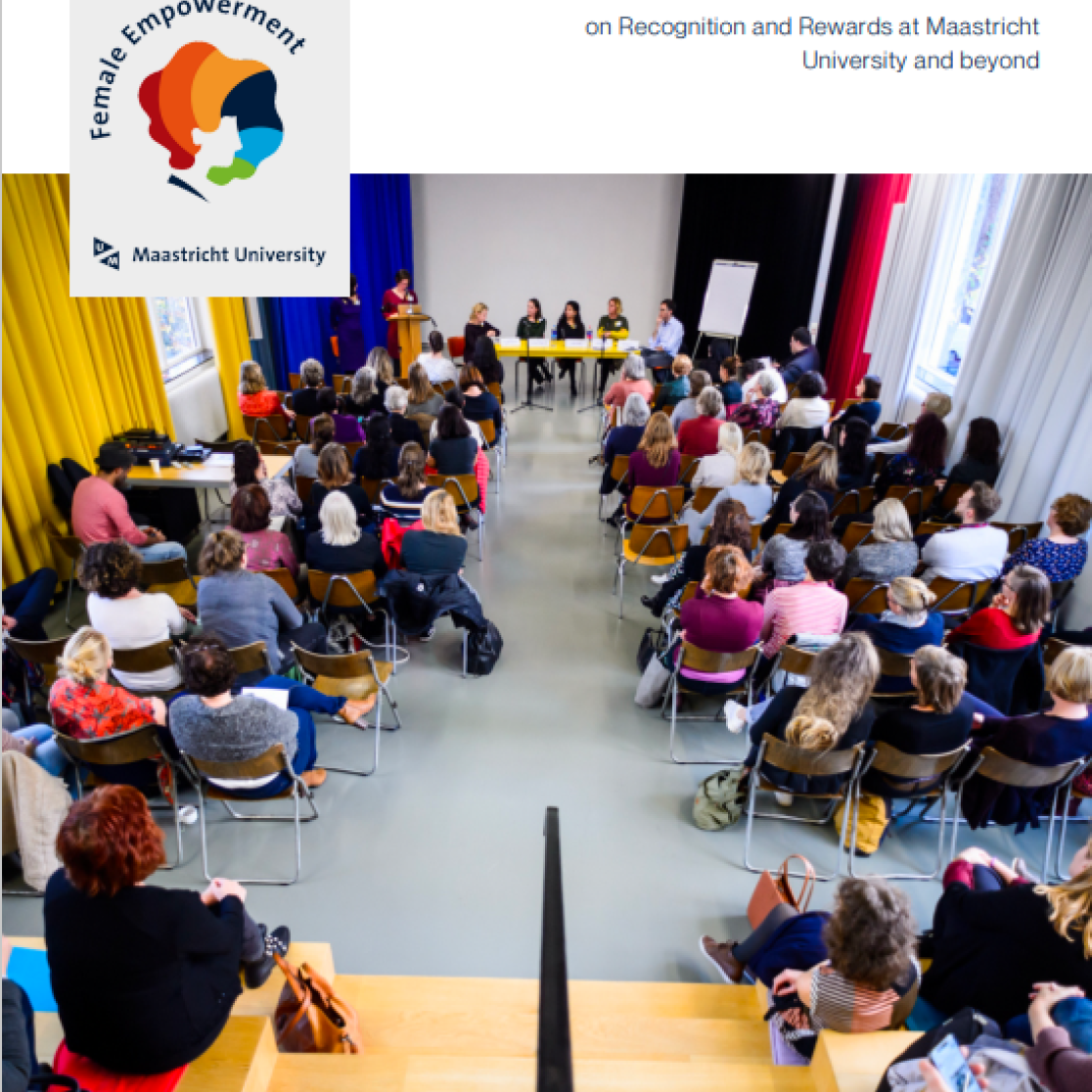
FEM Statement Border Workers - Fall 2021
In this open statement, the executive board of FEM wishes to draw the attention of both the task force Future of Working @UM and the Executive Board to the special needs of border workers when drafting their post-pandemic vision. The statement covers two specific sets of problems that have been overlooked: the guideline of working two days at home considered problematic for border workers, and the proof needed and requested from the countries of residence. Finally, we hope that the university will take action in order to find a solution that does not create disparities among employees.
Overview Grants, Awards and Fellowships for Women in Academia
Women remain underrepresented in academia. Despite numerous efforts to counter gender disparities, female scientists are less likely to get tenure, obtain less payment and research amenities, and are facing unequal allocation of research grants compared with male scientists (Van Der Lee & Ellemers, 2021). Yet, there are many EU and national grants, awards, and fellowships that try to tackle this disparity by offering schemes solely to women in academia.
Through this new information leaflet, FEM aims to inform UM employees of such opportunities. We wish to tackle the gender inequality in awarded research grants, and the unequal distribution of prizes which are critical for shaping scientific career trajectories. Created in collaboration with several funding advisors at UM, the guide offers an overview of a variety of funding schemes available to women, starting with all-study fields to STEM- or other discipline-specific fields. We hope that this leaflet can serve as a map to guide UM employees through the maze of potential grants, highlighting lesser-known - but still valuable - options for shaping and advancing your career.
One thing left to say is good luck with all future grant and award applications!
Feel free to distribute this leaflet in your network, and if you find errors or have new suggestions, please contact us on fem@maastrichtuniversity.nl.
Overview Grants, Awards and Fellowships for Women in Academia

Mitigating the negative effects of the Covid-19 crisis on caregivers at UM
In this position paper, we would like to raise awareness and propose measures to tackle the negative effects of the COVID-19 crisis on UM employees. We fully acknowledge that this pandemic has negative, potentially severe, consequences for all UM community members irrespective of their family circumstances (e.g., single or partnered, with or without children, with or without other care commitments, academic or administrative staff, men or women). The lack of social contact, the disturbance of normal activities at UM, the fast introduction of e-learning and e-work more generally, and to put simply, the impact of such a globally disheartening event on life and future has taken enormous energy and time.
The main goal of this position paper is to propose specific policy measures to be taken at UM to tackle the effects of the Covid-19 pandemic, based on the extensive literature available on this topic, to help all UM employees with caring responsibilities (men or women, academic or administrative staff). Whereas our recommendations concern employees with care responsibilities, we emphasize that amongst this group, women researchers have been particularly disadvantaged. Women researchers with small children should receive special attention.
